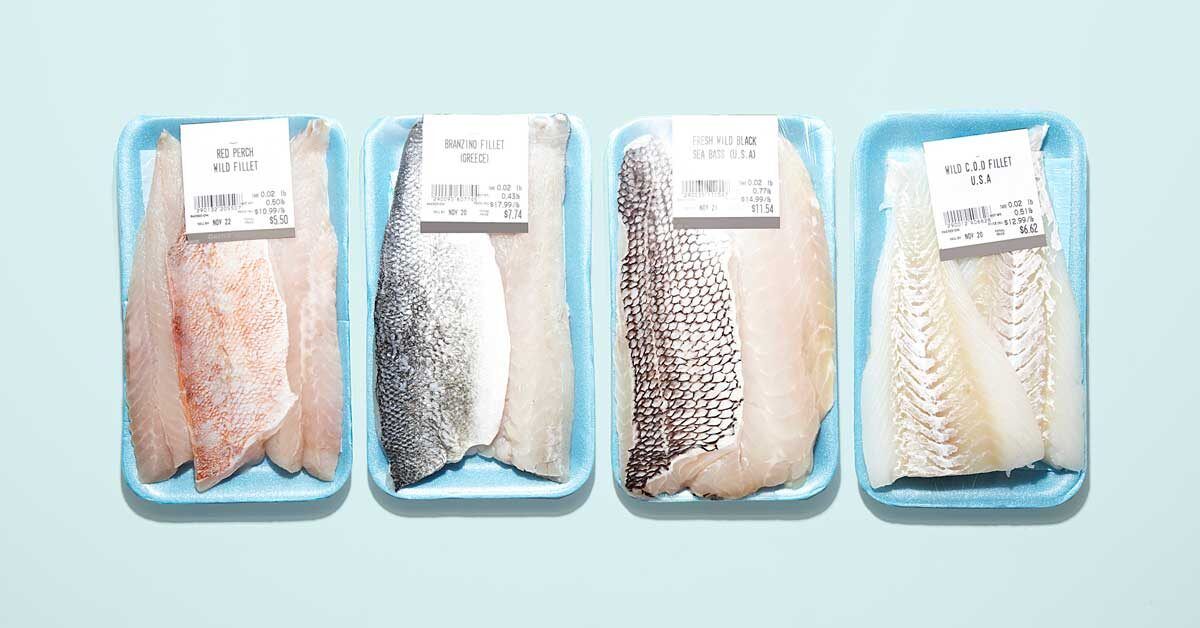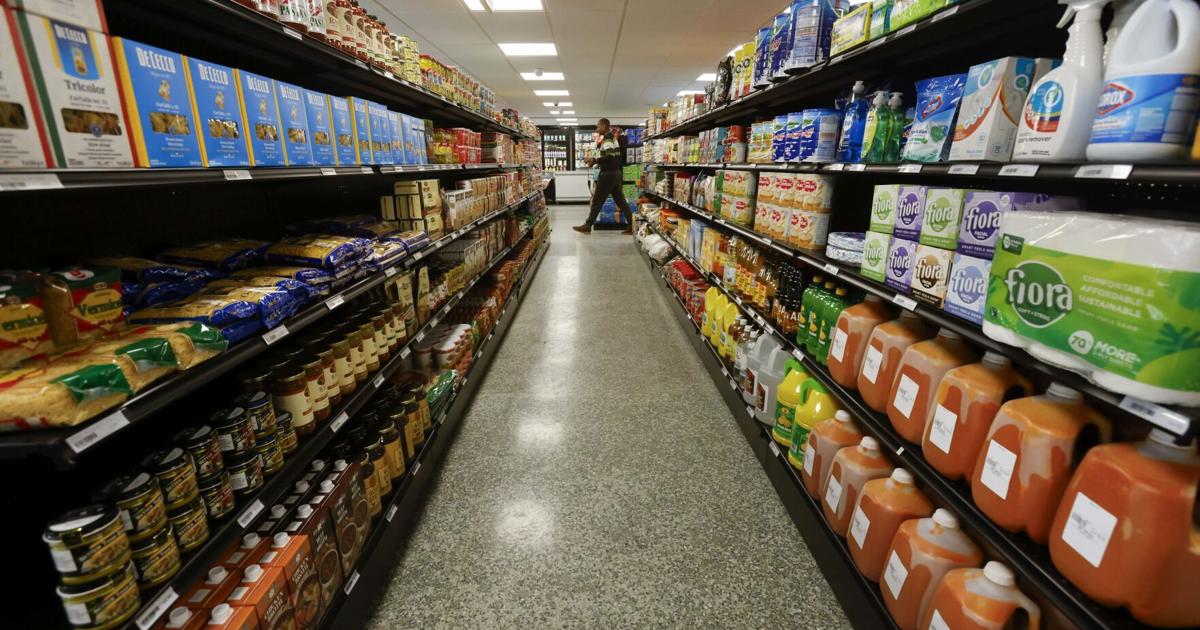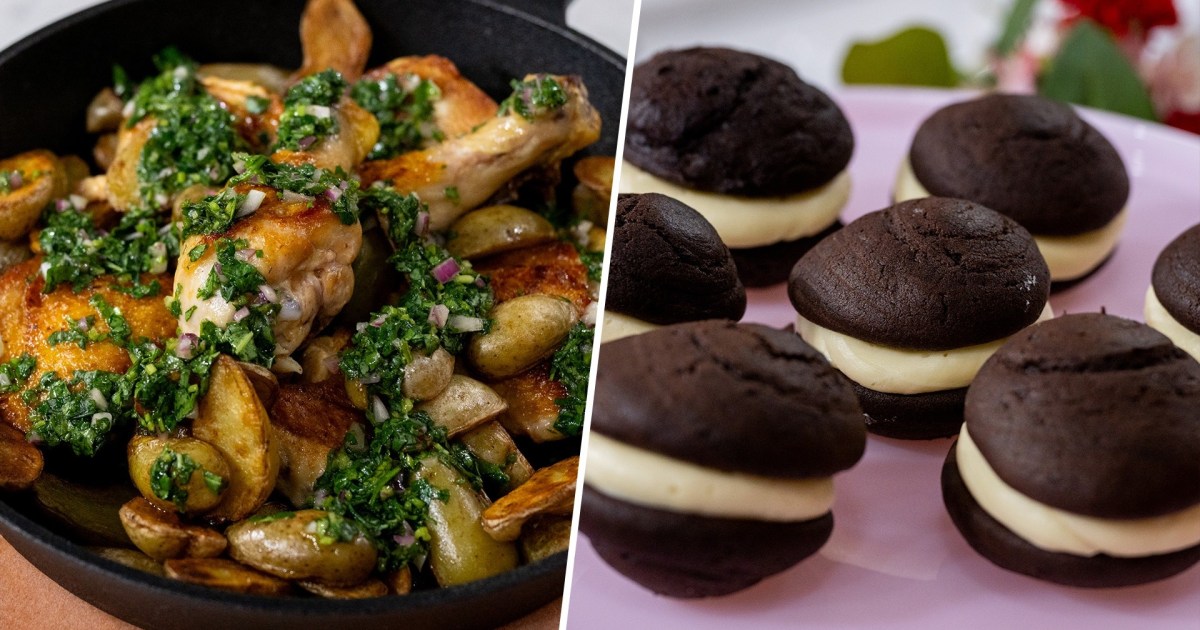Low-calorie meals are often touted in the fitness world due to the assumption that eating more of them will lead to weight loss. And while it’s true that low-calorie foods can be part of a weight loss or weight management journey, they are only one piece of the puzzle, and need to be incorporated with exercise, adequate hydration, mindfulness and other wellness practices.
“Calories aren’t everything, and just because a food is low in calories doesn’t necessarily mean that it’s healthy,” says Stefani Sassos, MS, RDN, CDN, Deputy Director of the Good Housekeeping Institute Nutrition Lab. “Calories also don’t tell us about micronutrients, also known as the important vitamins and minerals in food.”
If you’re trying to stick to an overall healthy diet and want to be mindful of your calorie intake, it’s all about making the smart choices and going with nourishing snacks and meals that are not only packed with vitamins and minerals, but that also are full of protein and fiber that help you feel full and satisfied.
We want to acknowledge that weight loss, health and body image are complex subjects. Before embarking on any diet, we invite you to gain a broader perspective by reading our exploration into the hazards of diet culture.
With that in mind, below are 13 of our top picks for the best low-calorie foods that are also filling.
Advertisement – Continue Reading Below
Low-fat or even fat-free Greek style strained yogurt is a great source of protein, probiotics, calcium and more. It is versatile, so it can be enjoyed as a meal or as a low calorie snack. It also provides a tasty protein boost for smoothies, and it can be used in both sweet or savory recipes. Fat-free Greek style yogurts contain fewer calories but may not be as satisfying as full-fat options, so a good middle ground is 1% or 2% varieties. The most important thing to keep in mind is reaching for brands with minimal added sugar.
“Greek yogurt can be enjoyed on its own or in a variety of different culinary uses. One of my favorite uses for Greek yogurt is mixed with spices in meat marinades, since it is a natural meat tenderizer,” says Sassos.
Nutrition facts according to the United States Department of Agriculture (USDA) per 1 container (150 g) nonfat yogurt: 90 calories, 0g fat, 49g sodium, 6g carbs, 0g dietary fiber, 6g sugar, 15g protein.
All berries are nutritious, raspberries, strawberries, blueberries and blackberries have the highest amount of fiber and lowest amount of sugar, and of course they all taste great! Throw them in smoothies, on plain Greek style strained yogurt or cottage cheese, and you have yourself a well-balanced snack. “Berries are packed with antioxidants, vitamins, minerals and fiber, and are a fantastic low-calorie food for fighting inflammation,” according to Sassos.
In a small study with 27 men, blackberries were shown to have a positive effect on fat oxidation and insulin sensitivity. They are also a rich source of polyphenols, a type of antioxidant associated with having cardio protective factors.f A review of multiple studies indicate that blueberries can also work to improve metabolic health and insulin sensitivity.
Nutrition facts according to the USDA for raspberries (1 cup): 64 calories, 0.8g fat, 0g saturated fat, 1.2mg sodium, 15g carbohydrates, 8g fiber, 5.4g sugar, 1.5g protein.
Most of us are familiar with the controversial relationship between eggs and cholesterol but despite this, eggs remain a great low- calorie lean protein. Eggs may indirectly reduce cravings for less healthy alternatives by keeping blood sugar levels stable.
“Eggs are a budget-friendly protein source to add to practically any meal, and they contain a variety of beneficial nutrients including choline and vitamin D which can both be difficult to find in other foods,” according to Sassos.
Nutrition facts according to the USDA (serving size 1 egg): 72 calories, 5g total fat, 0 g carbs, 0g fiber, 6g protein.
The rise of oat milk as a leading dairy alternative has moved oats center stage and into our dietary attention, and rightly so! Oats are a low-calorie food that are associated with many health benefits including improved gut bacteria and containing anti-inflammatory benefits.
“The soluble fiber in oats can help reduce LDL cholesterol levels, and more research is revealing that a type of compound known as avenanthramide, found in oats, may play an important role in protecting the heart,” says Sassos.
Nutrition facts according to the USDA (1/2 cup dried or 1 cup cooked): 150 calories, 2.5 g fat, 0 mg sodium, 27 g carbs, 4 g fiber, 0 g sugar, 5 g protein.
You may have noticed that cottage cheese is quickly becoming a social media darling due to its versatility, rich texture and low calorie content. It is also a high protein source that can be enjoyed as a sweet or savory snack or meal.
“Cottage cheese can be an easy way to add protein and calcium to any meal or snack,” according to Sassos. She recommends adding cottage cheese to your avocado toast for a lower-calorie, nutrient-dense boost.
Nutrition facts (1/2 cup or 116 g nonfat cottage cheese): 90 calories, 0 g fat, 470 mg sodium, 7 g carbs, 0 g fiber, 5 g sugar, 14 g protein.
Lean meat (including lean cuts of red meat) is a great source of protein, it is low in calories and fat. Lean meat can be an important part of a healthy and balanced diet. One reason may be because protein takes longer to digest than say refined carbs and therefore can help you feel fuller longer. Lean protein also has little effect on blood sugar. Studies have shown that adding lean protein to your diet can also contain cardio-protective factors.
“Lean meats not only are protein-rich, but they are complete sources of protein, since they contain all nine essential amino acids that our bodies cannot make and must come from food,” says Sassos.
Nutrition facts according to the USDA (3 ounces cooked chicken breast): 140 calories, 3 g fat, 0.9 g saturated fat, 72 mg cholesterol, 63 mg sodium, 0 carbs, 0 g fiber, 0 g sugar, 26 g protein.
Fish is not only a great source of lean protein, but it is also low in calories and is a rich source of heart healthy fats.
According to Sassos, many of the disease-fighting benefits of fish come from its heart healthy omega 3 fatty acids, which have been linked to benefitting cholesterol, triglycerides, inflammation and even blood clotting.
Fish is also rich in many nutrients that may help with metabolic and hormonal health including iodine, selenium, vitamin D and omega-3 fatty acids.
Nutrition facts according to the USDA (3 ounces cooked sockeye salmon): 143 calories, 6 g fat, 0.8 g saturated fat, 54 mg cholesterol, 114 mg sodium, 0 g carbs, 0 g fiber, 0 g sugar, 22 g protein.
Legumes check all the boxes, they are rich in satiating fiber and protein, they are also low in calories and fat. A recent study looked at the effects that whole foods had on body weight, body composition and measures of metabolic health. It concluded that increased intake of legumes was the “best single food predictor of weight loss.” Not only that, they are affordable and can be enjoyed so many different ways in both sweet and savory dishes, as a main course or a snack.
“Legumes are reliable, affordable and versatile kitchen staples. Use them for an added dose of filling fiber and plant-based protein to practically any meal,” recommends Sassos. “When choosing canned varieties, opt for low or reduced-sodium choices.”
Nutrition facts according to the USDA (per 1 cup chickpeas): 269 calories, 4.25 g fat, 11.5 mg sodium, 44.9 g carbs, 12.5 g fiber, 14.5 g protein.
Arugula is a dark leafy green vegetable that is part of the cruciferous family which also includes broccoli, cauliflower and Brussels sprouts among others. Cruciferous vegetables share many healthy nutritional characteristics including having powerful anti-inflammatory benefits. They are also a good source of folate and vitamin K and loaded with antioxidants and phytonutrients. Arugula is considered a bitter green and is a popular addition to salads because it can add a spicy flavor with a kick. It is low in calories with just 5 per one cup serving, so you can fill your plate and feel good about it.
“Most dark leafy greens are naturally low in calories, and arugula provides a bold and peppery flavor profile especially when compared to other vegetables of its kind,” says Sassos.
Nutrition facts according to the USDA (1 cup): 5 calories, 0.2g fat, 6mg sodium, 0.8g carbs, 0.4g fiber, 0.6g protein.
Cucumbers are technically considered a fruit, and they are part of the same family as watermelons. They are very low in calories, ringing in at 16 calories in one cup meaning you can eat a lot before it adds up. Also, the fact that they are made up of approximately 95% water contributes to their being a low calorie and satisfying food. They are very versatile, they can add a refreshing flavor when added to water, they can easily find a home in any salad. They can be pickled!
“Slice cucumbers in half lengthwise and scoop out the seeds with a spoon. You’ll want to leave a ¼ inch thick edge to create a boat like shape, and then fill your cucumber boat with your favorite dip like hummus, baba ganoush and more,” recommends Sassos.
Nutrition facts according to the USDA (1/2 cup of sliced cucumber): 8 calories, 0g fat, 1mg sodium, 2g carbs, 0.3g fiber, 0g sugar, 0g protein.
“Watermelon is over 90% water, making it a hydrating nutritious and filling snack especially in the summer months,” says Sassos.
It also contains the amino acid citruline which the body turns into arginine, an essential amino acid which studies have indicated may reduce the risk of cardiovascular disease. As if that isn’t reason enough to indulge in watermelon, another recent study found that daily consumption of watermelon is associated with a lower BMI (body mass index), body weight and blood pressure.
Store whole watermelons at room temperature, and once cut, you can refrigerate them in an airtight container for up to five days.
Nutrition facts according to the USDA (1 cup diced watermelon): 46 calories, 0.2g fat, 2 mg sodium, 11g carbs, 0.6g fiber, 9g sugar, 0.9g protein.
Broth based soups are low in calories and high in vitamin and mineral content. Their high water content can also help you feel fuller for longer. Studies have indicated that soup consumption can be helpful with weight loss especially when eaten before a meal. Take note that cream based soups can be very high in calories which is something to be mindful of if your goal is weight loss.
“Broth-based soups are not only comforting but often nutrient-dense and filling,” says Sassos. “Just look for lower sodium varieties when possible and opt to prepare it at home instead of purchasing at a restaurant or canned as those options tend to be very high sodium.”
Nutrition facts according to the USDA (1 cup vegetable broth, varies by brand or recipe): 12 calories, 0g fat, 550mg sodium, 3g carbs, 0g fiber, 2g sugar, 0g protein.
Popcorn can be a healthy treat that is helpful for weight management or weight loss due to being low in calories especially for a large serving size. It may also be a rich source of antioxidants known as polyphenols. Popcorn is a crowd pleaser and always a fun low-calorie snack, especially because it lends itself to social sharing.
“Popcorn is considered a whole grain and a good source of fiber, but skip the movie theater kind and opt for air-popped or lightly oil-popped varieties when possible,” recommends Sassos.
Nutrition facts according to the USDA (3-cup air popped without butter): 93 calories, 1.1g fat, 0mg cholesterol, 1.9mg sodium, 18.7g carbs, 3.6g fiber, 0g sugar, 3g protein.
There are plenty of interesting and engaging low-calorie foods that taste good and contribute to your overall health. Opt for foods that give you the most bang for your nutritional buck and offer a variety of vitamins and minerals, which starts with choosing whole real foods and reading labels too.
Why trust Good Housekeeping?
As a registered dietitian, Amy Fischer has worked with thousands of patients to improve their overall health through a whole foods and nutritious diet. Amy believes that food is to be enjoyed even on a weight loss journey and that while calories count, the focus should be on health, eating and living better and not just losing weight.
Having been through her own weight loss journey and providing nutrition counseling to patients and clients for the past eight years, Stefani Sassos, registered dietitian and Deputy Director of the Good Housekeeping Institute Nutrition Lab, is passionate about sustainable weight management and healthy eating practices.
Advertisement – Continue Reading Below




:max_bytes(150000):strip_icc()/ChickenBreast-7c055ca42ace4670867b52b9ab642824.jpg)






